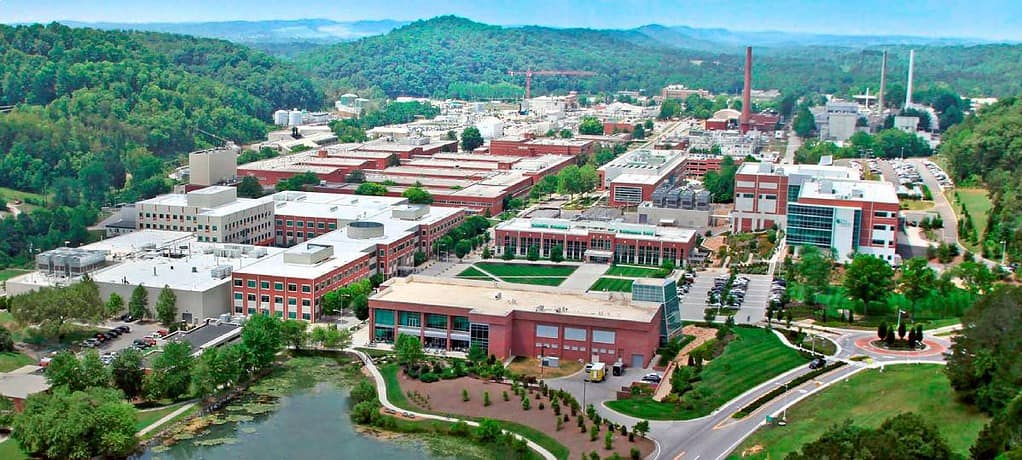ALBUQUERQUE, N.M. — The most efficient way to prevent potentially dangerous asteroids from damaging or even obliterating Earth may involve a coordinated nuclear response based on extensive prior data, according to Sandia National Laboratories physicist Nathan Moore.


Sandia National Laboratories physicist Nathan Moore stands with the Z machine facility framed in the background, the source of his asteroid data. (Photo by Craig Fritz) Click on the thumbnail for a high-resolution image.
“To most people, the danger from asteroids seems remote,” Moore said. “But our planet is hit by BB-sized asteroids every day. We call them shooting stars. We don’t want to wait for a large asteroid to show up and then scramble for the right method to deflect it.”
His team created experiments at Sandia’s Z machine, the most powerful pulsed-power machine on Earth, to monitor the deflection of synthetic asteroids subjected to Z’s sudden shocks. These experiments also beat gravity temporarily to better simulate the reaction of asteroids floating freely in space.
The goal is to create tables detailing the reactions of asteroids of varying compositions to deflection attempts, which would provide valuable data to those responding to asteroid threats in the future.
Challenges and preparedness
“Practice makes perfect” is a reasonable philosophy, Moore said, but there are too few large asteroids observable near Earth to gain expertise by experimentally deflecting them beforehand.
“The day after, there would be no re-dos,” Moore said.
In 2023, the National Academy of Sciences released a report calling planetary defense a national priority. An ongoing NASA sky survey deems the threats credible: There are an estimated 25,000 objects big enough to cause varying degrees of destruction that could approach Earth’s vicinity, and only about one-third of them have been detected and tracked. Many move invisibly in the sun’s glare. A relatively small arrival in 2013 created chaos in Russia; a larger one is credited with ending the epoch of dinosaurs.
X-ray ‘scissors’ momentarily beat gravity
Responding to the need, Moore and a team of Sandia scientists developed a method to record how much change in direction, or momentum, would be imparted to mock-asteroid material when subjected to the powerful X-ray pulses generated by Sandia’s Z machine. The experiment uses a technique called X-ray scissors, which removes the skewing effect of friction and gravity for a few microseconds. This helps model the actual circumstance of redirecting an asteroid free-floating in space when impacted by a series of nuclear-intensity explosions.
That is, the force of the explosion on the mock asteroid could be scaled to predict the effects of nuclear explosions on an actual asteroid.
“I started working through the logic of how I could deflect a miniature asteroid in a laboratory just like in outer space,” Moore said. “A key fact was that asteroids in outer space aren’t attached to anything. But in a lab, everything is pulled down by Earth’s gravity, so everything is held in place by its gravitational attachment to something else. This wouldn’t let our mock asteroid move with the freedom of one in outer space. And mechanical attachments would create friction that would perturb the mock asteroid’s motion.”
The solution was to release the mock asteroid into the free space of vacuum, leading to the X-ray scissors concept.
To simulate a possible code red, Moore’s team placed a tenth of a gram of asteroid-like material — in this case, silica — in the target chamber of the Z machine, which reaches the temperature of the sun. The material was suspended by very fine foil, eight times thinner than a human hair, that instantly vaporized when Z fired. The process, termed “X-ray scissors,” untethered the sample material and left it free-floating, unaffected by gravity, just as the machine’s X-ray burst struck it. The velocity and impact of the target mass were noted. Researchers believe they can model the change in velocity exerted by a nuclear explosion near an asteroid free-floating in space.
Future steps and implications
“It was a novel idea,” Moore said. “A mock asteroid is suspended in space. For a one-nanometer fall, we can ignore Earth’s gravity for 20 millionths of a second as Z produces a burst of X-rays that sweeps over the mock-asteroid surface 12.5 millimeters across, about the width of a finger.
“The trick is to use just enough force to redirect the flying rock without splitting it into several equally deadly subsections advancing toward Earth,” Moore said, referring to a real intercept scenario like the recent NASA DART experiment.
The experiments, reported in the September 25 Nature Physics issue, are the first steps to creating a library of induced changes in asteroidal velocity to be consulted when an actual asteroid is analyzed by laser to determine its contents and its mass and velocity are telescopically known.
“Some asteroids are believed to be held together loosely — so-called ‘rubble piles’ — and how that would respond in the explosion will require more complicated mathematics. But without this capability, we would have to rely on practice missions in space, which are few and costly.” NASA has only done one such mission to date, he said, and it involved a different deflection mechanism — kinetic impact — that wouldn’t be suitable for the most Earth-threatening asteroids.
The team also has questions about fundamental properties of asteroid material under these extreme conditions — how the relationships between a material’s density, pressure and temperature change during asteroid deflection, which is also relevant to planetary formation, planetary impacts and even the robustness of walls for future fusion reactors.
Sandia National Laboratories is a multimission laboratory operated by National Technology and Engineering Solutions of Sandia LLC, a wholly owned subsidiary of Honeywell International Inc., for the U.S. Department of Energy’s National Nuclear Security Administration. Sandia Labs has major research and development responsibilities in nuclear deterrence, global security, defense, energy technologies and economic competitiveness, with main facilities in Albuquerque, New Mexico, and Livermore, California.
Sandia news media contact:Neal Singer, 505-306-3720, nsinger@sandia.gov
This Sandia National Laboratories news article "Deflecting doom: How Sandia research could save Earth from asteroids" was originally found on https://www.sandia.gov/news/


